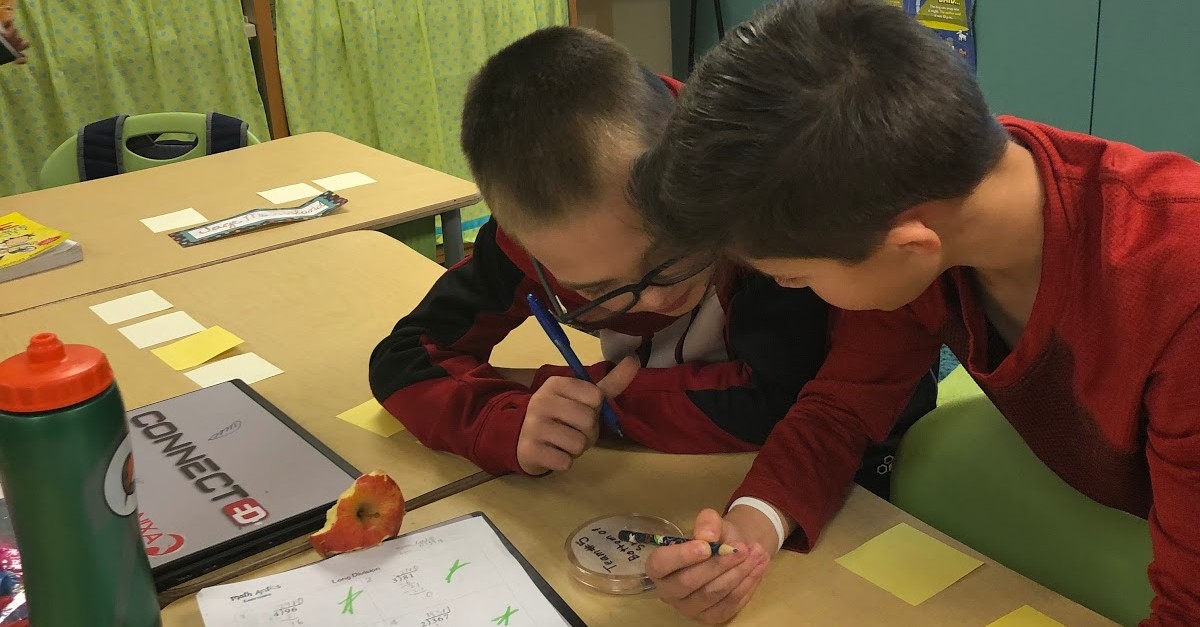When most of us hear “inquiry-based learning” we tend to think it requires a complete overhaul of the work we are currently doing. This is simply not the case. By making a few adjustments in the daily work you are already doing, big changes in student learning are possible.
Make Time for Messing About
“There is a time, much greater in amount than commonly allowed, which should be devoted to free and unguided exploratory work (call it play if you wish; I call it work).” – David Hawkins
Think about the first time you folded a sheet of paper and launched it into the air, watched it fly, and considered all the ways you could make it fly faster, glide longer, or soar higher. Or that time you set up your first lemonade stand, mixing and stirring, shaking and tasting, until you settled on the perfect concoction of sour and sweet. So much of our childhood is spent learning through play. Then at some point, we decide to put away the “toys” and pull out the textbooks.
But… why? Messing about is a natural prerequisite to the pursuit of intellectual understanding. When messing about, students build an apperceptive understanding for a subject, and have opportunities for surprise and discovery. And most importantly, an inquiry-driven foundation for further learning. So, put out those tools they’ll be using or give them access to the data they will be exploring, and do so without any direction except, maybe, “What do you wonder?”
Focus on Four Small Changes
Students don’t know the “answer” they are supposed to get.
Curiosity is a powerful catalyst for learning. When we can pose a question that is open-ended and allows for multiple “right” answers, determined solely by the direction each student or group chooses to take, that’s powerful and meaningful learning. So, ask big questions and give minimal direction. See what happens. It involves a bit of risk – for you and your students. But by taking the leap, the opportunities are endless as to where they may land.
Students play a driving role in determining their process for learning.
Learning is all about engagement. When we release authority and hand the reins over to our students, engagement is inevitable. Why? Because now they feel that their learning is powerful and purposeful. Once the question or problem is posed, leave it up to the students to navigate their process for learning. This takes a fair amount of modeling, answering questions like, “Where can I go to find information about ___?” and “What do I do once I find the information I am looking for?” along with many others. But think about the high levels of inquiry that will ensue when students feel like they have agency over their process for learning.
Teachers and students construct meaning together.
As a teacher of inquiry-based learning, it is essential to provide our students with the tools in which students can formulate and test their ideas, draw conclusions and inferences, and pool and convey their knowledge in a collaborative learning environment. And, of course, give them clear guidance on how to use them. One of the most powerful ways to construct meaning is through journaling. This gives students a place to record the thought processes they are engaging in and document what they have discovered. It is a great tool to use for formative assessment and provides a wealth of opportunities for the teacher and the student to interact with information together.
Students are working as hard as the teacher.
Ready for some straight talk? Stop being the expert. As teachers, we fall into this trap oftentimes where we feel we have to be the information provider. There is a time and place for this type of instruction, but seek out opportunities where you can turn this work over to your students. When they have a question, it’s okay (in fact, powerful!) to say, “That is a good question. How could we find the answer?” and open up a time and space to fulfill their curiosities. But ultimately, let them do the heavy lifting. This is one of the best ways to ensure that we are developing problem-solvers and life-long learners.

